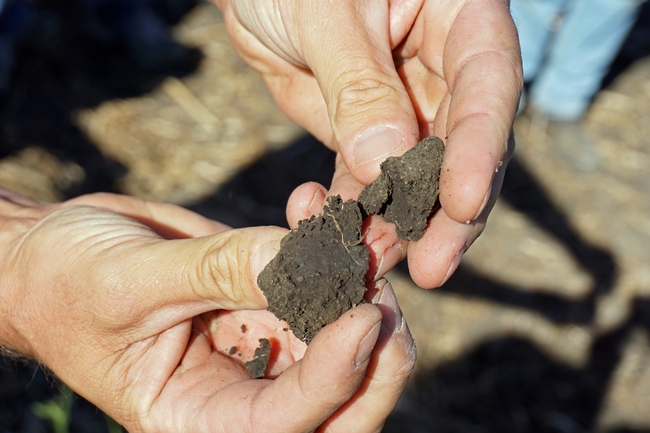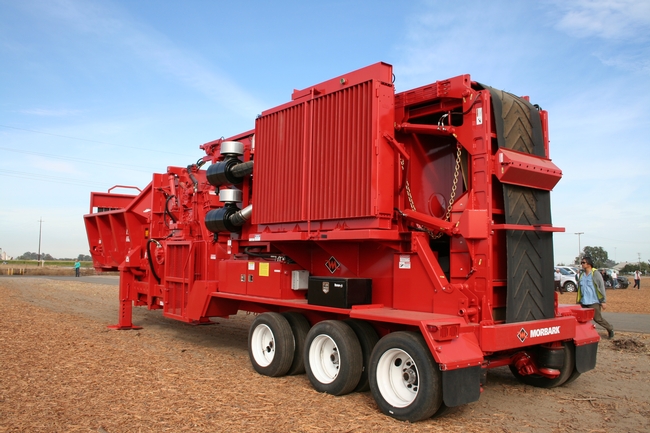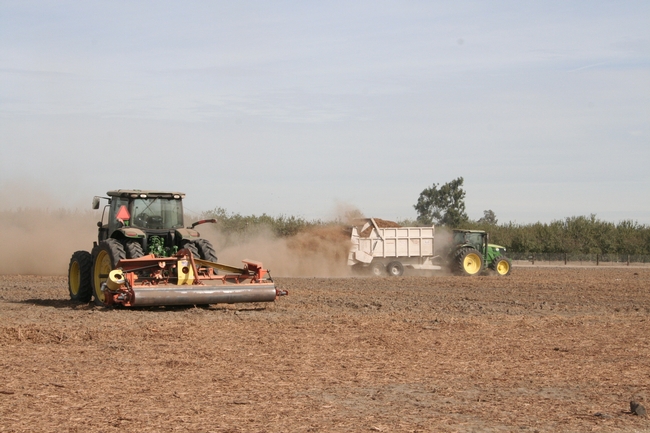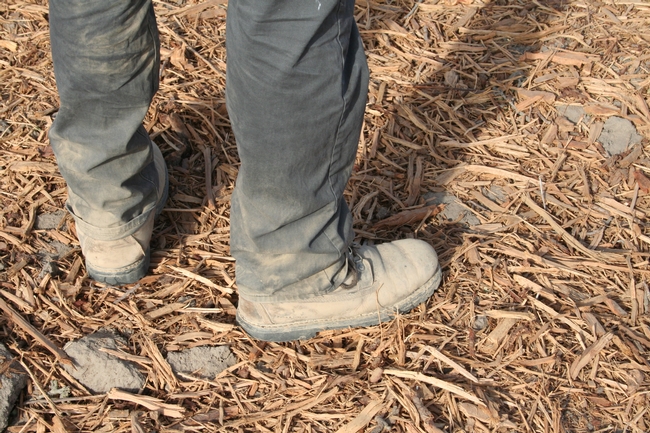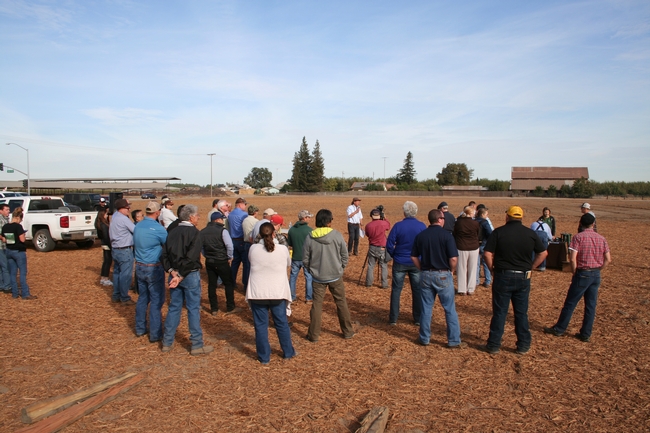
Posts Tagged: Carbon
Plant a Tree. Leave a Legacy!
Do you have Spring Fever? If you have adequate space, why not leave a legacy to your children's children by planting a tree? When the right species is planted in the right location with the right care, landscape trees can be enjoyed for 100 years or more. Landscape trees cool urban heat islands, absorb carbon dioxide, filter toxic chemicals from soil preventing them from polluting our waterways, reduce soil and water erosion, reduce internal energy needs and related costs, provide habitat, and beautify neighborhoods.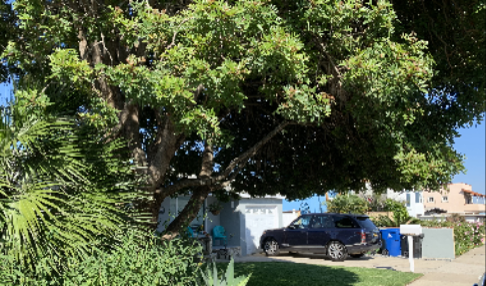
Spring is a much better times to plant a container landscape tree in California than is summer. Trees incur far less stress if they've been in the ground several weeks rather than having to immediately adapt to high summer temperatures. Cooler weather allows plants to establish roots in their new ‘home' before the harshness of summer sets in. (Deciduous bare-root fruit trees, on the other hand, should be planted during the winter when they are dormant.) Choose recommended species for your climate and micro-climate.
Choose trees based on your Sunset climate zone (more precise than USDA zones for California since they include impacts of high temperatures as well as low temperatures) and your microclimate (shade, soil conditions, space, etc.). Four of my favorite search engines that allow one to search by multiple criteria (size, water needs, flower color, ecosystem functions, pest susceptibility, etc.) are: Inland Valley Garden Planner: https://inlandvalleygardenplanner.org/; Cal Poly, Pomona: https://selectree.calpoly.edu;California Native Plant Society: http://www.cnps.org/cnps/grownative/lists.php; and WUCOLS IV (Water Use Classification of Landscape Species): http://ucanr.edu/sites/WUCOLS
Avoid circled, girdled roots. Remember to inspect the root system of container trees. Avoid purchasing specimens with severely circled and girdled roots. Root pruning will not solve the problem and the resulting tree is much more prone to failure later. This occurs because the upper portion of the tree continues to grow and expand while the root system lacks the breadth and architectural strength to support the tree. Many times a tree will look fine for several years and - seemingly - very suddenly topple in winds that otherwise it could sustain with a more adequate root system. Only when the tree falls does the owner actually notice firsthand that the root system is the same size it was when the tree was planted years before!
Check drainage before you plant. Dig a hole where you are planning on planting the tree, fill it with water, and make sure it completely drains within 24-hours. If it doesn't drain, don't plant a tree there. In some cases, trees are carefully selected based on species and location only to perish ten or more years later due to poor drainage and water-logged soil. Trees often die in these situations due to a lack of aeration setting them up for disease-causing fungal pathogens.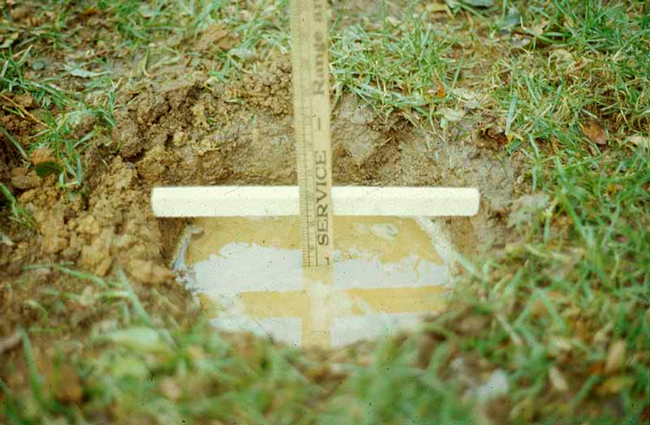
Planting the tree. Dig a hole at least 2-1/2 times the width of the container (in clay or compacted soils make the hole at least 4-5 times wider) up to two inches shallower than the depth of the tree in the container to compensate for settling. Use a shovel or trowel to roughen the soil on the sides of the hole to encourage root growth into the native soil. Remove the tree from the container along with any loose soil that covers the lower part of the trunk. Carefully place the tree in the planting hole, keeping the trunk flare (the area where the trunk widens and connects with the roots) 1-2 inches above the existing grade. Gently fill the hole with the same soil that was removed. Do not add soil amendments or compost, another common cause of circled and kinked roots. Irrigate the tree immediately after planting through the entire root system and slightly deeper. Keep in mind that soils with appreciable clay content absorb water more slowly than sandier soils and need to be watered longer but less often. Water newly planted container trees often through their establishment period, even if they are drought tolerant species. Recently transplanted trees have a small volume of roots that dry out very quickly. Water newly planted trees regularly through the first season. Trees in sandy soils require more frequent watering than do trees in heavier soils. (After trees are fully established, irrigation frequency should be reduced but more water should be added during each irrigation.)
Avoid staking trees unless necessary. Stake trees only if they were staked at the nursery and/or if they are planted in a wind-prone area. Remember to loosen ties on nursery stock before they girdle the trunk. Gently secure any tree requiring staking with two opposing flexible ties on the lower half of the tree, allowing the tree to gently blow in the wind to encourage lower trunk strength. Avoids taking trees tightly, restricting flex. As the tree matures, remember to loosen ties and aim for removing stakes entirely if the tree is self-supporting.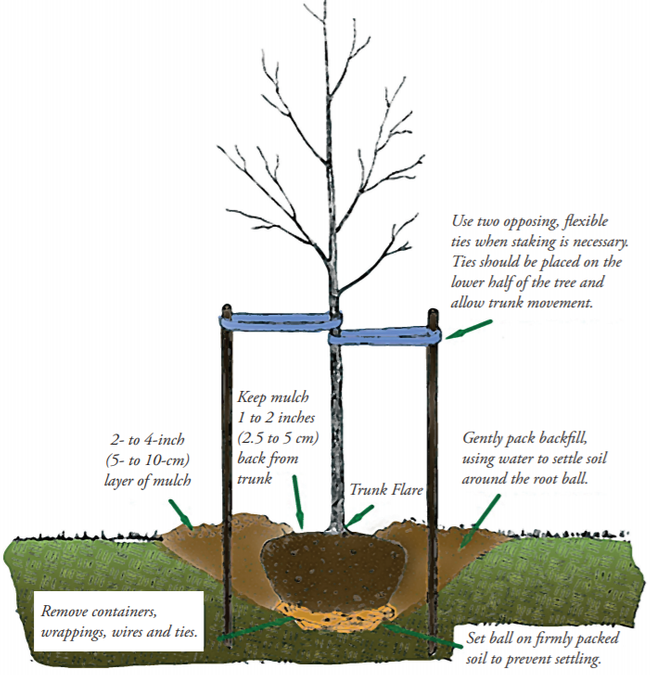
Pruning. Avoid heavy pruning at the time of planting. Remove only broken branches, crossed branches and suckers at the base of the tree.
Fertilizing. Most trees have received adequate nutrition in the nursery and do not need fertilizer at the time of planting.
Mulching. Apply a 2-4 inch layer of mulch three or more inches away from the tree trunk. Organic mulches such as woodchips and compost should be applied and maintained at a depth of 3-4 inches to prevent weed seeds from sprouting. Inorganic mulches (gravel, pebbles, etc.) should be maintained at 2-3 inches. In fire-prone areas, organic mulches near the urban/forest interface should be avoided. Remember to irrigate below the mulch.
For more information on tree planting and care and all other home gardening and landscape topics, contact the UCCE San Bernardino County Master Gardener Helpline at mgsanbern@ucanr.edu
UC Cooperative Extension to investigate healthy soil practices with CDFA grants
Six UC Cooperative Extension research projects were awarded funding ranging from $100,000 to $250,000 each from the California Department of Food and Agriculture Healthy Soils Program. The grants are designed to fund implementation and demonstration of on-farm soil health practices that reduce greenhouse gas emissions and store carbon.
One of the grant recipients, John Bailey, director of the UC Hopland Research and Extension Center in Mendocino County, will use the $100,000 award to establish a perennial hedgerow at the center. Hedgerows are not traditionally part of standard ranching practices in Mendocino County, where in the past the center's 5,400 acres of rangeland and surrounding areas were grazed by large flocks of sheep.
“At Hopland, we have pivoted our operation to reflect the current state of the sheep industry in California, with reduced overall sheep numbers and decreased individual flock size, so we will use this project to show our smaller-scale sheep owners how they can enhance the ecosystems of their properties,” Bailey said.
Bailey expects the hedgerow to offer many educational, ecological and practical benefits, including enhancing soil health, increasing soil carbon sequestration, and providing habitat and food sources for beneficial organisms, such as pollinators and birds.
There may also be economic benefits to using sustainable practices in raising sheep. The project will explore the financial costs of implementing hedgerows as well as the opportunity for producers to enter a niche fiber market by offering sustainably produced wool to textile companies and consumers willing to pay a premium to support the ecological benefits of Healthy Soil Projects.
“I'm excited about this opportunity to combine the latest knowledge on environmental sustainability practices with the older traditions of livestock grazing in Northern California,” Bailey said. “This is a progressive step that ties in ecological knowledge that can benefit the livestock ranching model by both enhancing their properties and creating new markets for their products.”
The following projects were also funded by CDFA Healthy Soils Program in 2020:
Integrated sustainable nitrogen management in vegetable cropping systems, $250,000
Maria de la Fuente, UCCE county director and advisor, Monterey and Santa Cruz counties
The implementation of climate-smart agricultural practices within intensively managed vegetable cropping systems is extraordinarily challenging. Often conservation practices cannot be effectively implemented due to operational barriers, resulting in very low rates of adoption.
By demonstrating nutrient management strategies in partnership with a large influential vegetable grower in the Salinas Valley, the project aims to encourage broad scale practice adoption.
Recent research has indicated the addition of organic amendments in combination with nitrogen fertilizers potentially reduces nitrogen-derived greenhouse gas emissions and nitrate leaching while increasing soil carbon stocks. These outcomes will generate significant climate benefits in agroecosystems experiencing heavy tillage and fertilizer inputs.
This project has the potential for statewide impact as the researchers are currently working with the developers of COMET-Farm to provide data and coordinate outreach within vegetable cropping systems. Through direct engagement the team will make integrated sustainable nitrogen management more feasible and agronomically favorable for producers.
Using hands-on COMET-Farm-focused field days and a webcasted sustainable nitrogen short course, the project will provide producers with additional tools to make nutrient management planning decisions that have positive climate and soil health outcomes.
Evaluation of compost application to processing tomato fields in the Sacramento Valley, $100,000
Amber Vinchesi-Vahl, UCCE vegetable crops advisor, Colusa, Sutter and Yuba counties
The project will demonstrate compost applications on two farms in two Sacramento Valley counties, Colusa and Sutter. The researchers will work with Westside Spreading LLC and compare two plant-based compost rates to a control (no compost) over three years. Soil health parameters – such as total carbon and nitrogen, pH, EC, organic matter and fertility analyses relevant to tomato crop production – will be measured.
The benefits of compost applications vary depending on how often they are used, how much is applied, crop rotation, and other management decisions, such as whether compost is incorporated or left on the soil surface. Vinchesi-Vahl expects that over time the compost implementation evaluated in this project will result in lower input costs and improved soil function.
Compost application may reduce the need for fertilizer inputs for some of the rotational crops and provide benefits to the microbial community, thereby improving soil structure and reducing heavy conventional tillage needs.
By improving soil health, the research expects plant health will also be improved, leading to better tolerance to pest pressure from diseases and weed competition.
The two demonstration sites will showcase compost applications and their impact on processing tomato production and annual production soil health. These focused demonstrations will be extremely important in showcasing this soil health practice in the local Sacramento Valley region, providing information to growers from the experiences of collaborators at the two sites.
Evaluation of winter cover crop species for their ability to mitigate soil compaction in an annual rotation, $100,000
Sara Light, UCCE agronomy advisor, Sutter, Yuba and Colusa counties
This project has three components:
- Replicated research plots in which three cover crop varieties are evaluated for improvements in soil structure, specifically subsurface soil compaction
- Fieldscale demonstration plots in which varieties thought to reduce soil compaction are planted and visually assessed for performance in the Sacramento Valley
- Small, single-row hand planted plots in the buffer area, in which a wider number of both summer and winter cover crop varieties will be planted for outreach and demonstration purposes
Combined, these components will enable growers to make more informed decisions about cover crop selection and encourage wider adoption of cover cropping. The outreach objective for this project is to reduce barriers to cover crop adaption among regional growers by increasing knowledge and information about varietal selection and field-scale cover crop management, as well as opportunities to improve soil structure using cover crops.
Healthy soils demonstration project with Cardoza Farm, $100,000
Ruth Dahlquist-Willard, UCCE small farms advisor, Fresno and Tulare counties
This project will demonstrate compost application, hedgerow planting, and application of mulch generated from cover crop residue in a vineyard producing organic raisin grapes. Mulch will be applied directly under the vines, providing ground cover that will conserve soil moisture and decrease weed pressure. Generating the mulch on-farm eliminates the need to transport materials from outside sources.
Currently, production of organic raisin grapes involves frequent tillage under the vines. The cover crop between rows and the mulch under the vines will reduce the need for tillage for weed control and increase soil organic matter. These practices will be showcased at field days that will include bilingual training for small-scale, socially disadvantaged farmers in the San Joaquin Valley.
Application of compost to alfalfa to improve soil structure and fertility, $250,000
Kate Scow and Radomir Schmidt, UC Davis Department Land, Air, Water Resources and UCCE advisors Michelle Leinfelder-Miles and Rachael Long
This project will demonstrate compost application to alfalfa for improving soil structure and fertility. Compost is not typically applied to alfalfa; however, manure application to alfalfa is common in the state's dairy regions.
The over half a million acres of alfalfa in California could represent an important repository for compost, for which a large land base of spreading may be needed as municipalities convert organic waste management streams to diversion from landfills.
Alfalfa has the ability to immobilize large amounts of nitrogen and phosphorus, nutrients of concern in the concentration of organic wastes due to their potential to contribute to water pollution. Furthermore, alfalfa growers are interested in the potential of compost to improve soil structure in their alfalfa fields, as many growers report suffering from the large cracks that form in soils during the wet-dry cycles of alfalfa surface irrigation management.
Compost application has been anecdotally reported to alleviate soil cracking in another perennial crop, almond orchards in the Central Valley, but soil structure improvement via management practices like compost application has received little research attention thus far. Westside Spreading LLC is collaborating on this project.
Carbon Neutrality Initiative fellows seek to reduce our carbon footprint
UC Berkeley doctoral candidates Jose Daniel Lara, Allegra Mayer and Carmen Tubbesing, UC ANR's Carbon Neutrality Initiative (CNI) fellows for 2017-18, are studying new sources of renewable energy and strategies to cut carbon emissions.
The UC President's Carbon Neutrality Initiative Student Fellowship Program, established in 2015, funds student-generated projects that support the UC system's goal to produce zero-net greenhouse gas emissions by 2025.

The 2017-18 CNI fellows:
Jose Daniel Lara of San Jose, Costa Rica, is a first-year Ph.D. candidate in the Energy and Resources Group at UC Berkeley. Lara aims to determine the feasibility of producing electric power from dead trees. To analyze the resources available from tree die-off, he will develop a method to simulate harvesting of dead trees and evaluate the cost of harvesting dead biomass for electricity production. These results will inform policies regarding the use of biomass feedstocks to generate electric power and help mitigate the consequences of massive tree die-offs in forest communities throughout California.
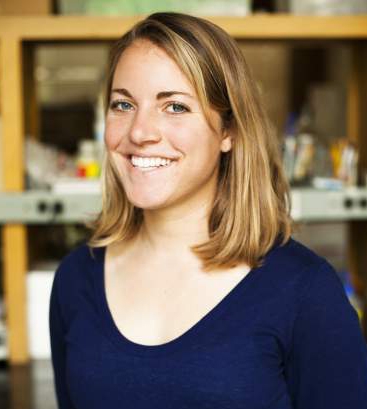
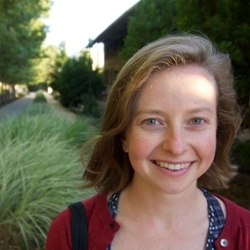
Planet-friendly orchard recycling makes money sense
The numbers are beginning to trickle in confirming UC Cooperative Extension advisor Brent Holtz' hunch. Chipping and returning expired almond orchards into the soil where they grew is not only environmentally sound, it is economically smart.
(View a three-minute video of the machinery in action at the end of this post.)
After about 20 years, almond orchards' productivity and vigor begin to decline. Most farmers remove the old trees and plant younger, more vigorous replacements to keep up almond production.
In the past, old trees were easily and cheaply disposed of: they were pushed into a pile and set on fire. Air quality regulations have all but eliminated the practice.
At first, grinding the trees and sending the chips to a co-generation plant was a farmer's preferred option. The companies that used biomass for electricity generation paid an acceptable sum – about $600 per acre – for the wood chips, which helped offset the cost of chipping and hauling the trees off the property.
However today, electrical utilities are looking for clean, renewable energy sources like wind and solar.
“Cogeneration plants burn wood biomass, which still releases carbon dioxide and methane into the atmosphere,” Holtz said. “Many are losing contracts and shutting down.”
Holtz sought another cost-effective alternative, and believes incorporating the wood into the orchard floor may be the answer. Although initially expensive, adding $400 per acre to the $600-per-acre cost of chipping the old trees, the organic matter and nutrients released by the woodchips over time appear to boost yield to a level that covers a chunk of the cost.
In preliminary research, Holtz found that almond orchards where old wood was incorporated into the soil were averaging about 1,800 pounds of meat nuts per acre, while the orchard where old trees had been burned averaged 1,600 meat nuts per acre.
“Almonds sell for about $2 to $3 per pound. To have a 200-pound average yield increase per acre, you've made up the cost of incorporating the wood in just one year,” Holtz said. “It would be even more affordable if farmers can sell carbon credits for the biomass that they sequester in the ground.”
Holtz recently demonstrated two approaches for incorporating almond trees into the soil. The first, which was also used in the study eight years ago at the UC Kearney Agricultural Research and Extension Center in Parlier, is a 50-ton rock crusher called the Iron Wolf. It lumbers down the tree row, grinding up whole trees in place, then reverses over the mangled wood to incorporate it into the ground.
“We thought this one-machine process was the answer,” Holtz said.
G & F Ag Services in Ripon, which has made a business of chipping and hauling almond wood to a co-generation plant, conceived another plan. It modified a manure spreader to spray ground-up wood chips across the orchard floor. Holtz worked with Manteca farmer Louie Tallerico to give the new process a spin.
“This required five different machines working together compared to one Iron Wolf. In this process, the trees have to be excavated by an excavator, then hauled to the wood chipper with a front-end loader. The trees have to be fed into the wood chipper, then the wood chips have to be spread on the orchard floor,” Holtz said. “Another machine, a disk or roto tiller, incorporates the chips into the soil.
The five machines combined are a tremendous time saver.
“The Iron Wolf could do about two acres per day,” Holtz said. “This process can do 15 or 20 acres per day.”
Tallerico opened his farm for a field day in October to demonstrate parts of the process to other farmers and industry representatives. Participants stood on layer of fresh-cut wood chip mulch where a full-grown almond orchard stood just weeks before. The spreader demonstrated the ease with which the wood chips are dispersed evenly across the orchard floor, and a tiller mixed the wood chips into the soil.
The Tellarico orchard will now be the site of research – funded by the California Almond Board – to be conducted by Holtz and a team of scientists interested in documenting the growth and development of the new almond orchard among the remnants of its predecessor.
“In the previous study, three years after incorporating the old trees into the soil we started to see the nutrient benefit,” Holtz said. “This was done at Kearney, where we incorporated a peach orchard that had about 30 tons of organic matter per acre. Almond trees are larger, so here we have 86 tons of organic matter being returned to the soil.”
In the new study, the scientists will determine whether the nutrient benefits found in early research still hold true, whether the wood chips in the soil stunt the new orchard or boost its growth, whether the new orchard suffers from replant disease, and the fate of good and bad nematodes (tiny soil-borne worms) in the new orchard.
“We will also study the carbon budget and continue the life cycle assessment of almond with this practice, to better understand the benefit of these processes,” Holtz said.
UCCE is taking the melodrama out of almond orchard recycling
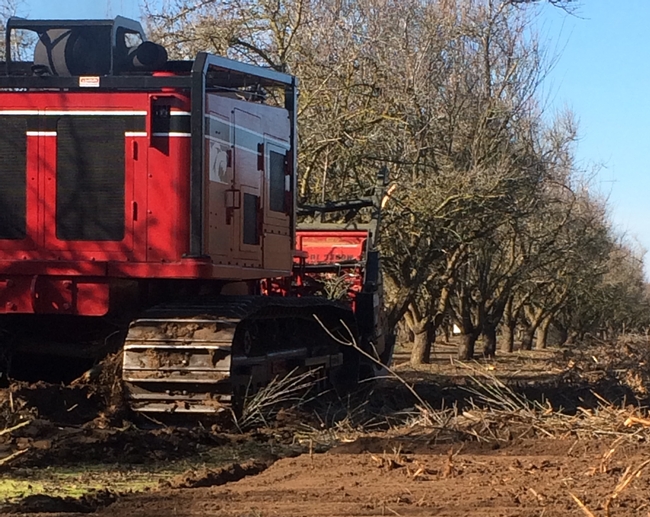
Almond farmers will remember a UCCE demonstration last February when the 50,000-pound Iron Wolf rolled like a tank through an almond orchard in Chowchilla, ripping whole trees into shreds and incorporating the wood into the soil.
Researchers are now considering a less dramatic approach to removing an old orchard and incorporating the wood chips into the soil onsite. Combining a traditional horizontal chipper with a wood chip spreader modified for this purpose can be a viable alternative to the now-mostly banned burning of old orchards or transport of almond tree residue to co-generation facilities that convert biomass to energy.
“It's still cheaper for the farmer if he or she can sell the wood chips for co-generation,” said Brent Holtz, UC Cooperative Extension advisor in San Joaquin County and the research leader. “But co-generation plants are closing and our research is showing that incorporating the biomass into the soil has many benefits.”
When the wood breaks down, it returns nutrients to the soil. Organic matter increases, resulting in carbon sequestration, important for moderating the release of greenhouse gases into the atmosphere that may contribute to climate change.
The chipper and spreader combination pencils out at about $1,000 per acre, while the Iron Wolf costs about $1,500 per acre.
“The Iron Wolf turned out much more expensive and slower than we anticipated,” Holtz said. “It could only grind up and incorporate about two acres of trees per day, while the horizontal chipper can chip 15 acres per day. With the chipper and spreader combination, the chips do have to be disked in, which most growers can easily do.”
The whole orchard recycling project was funded by the Accelerated Innovation Management program of the Almond Board of California.
Whole Orchard Recycling Demonstration
11630 S. Airport Way (near Roth Road), Manteca, Calif.
Thursday, Oct. 13, 2016
10 a.m.
Whole almond orchard recycling and the effect on second generation tree growth, organic matter and soil fertility presentation
Brent Holtz, Ph.D., UC Cooperative Extension advisor
10:30 a.m.
Kuhn & Knight Wood Chip Spreading Demonstration
Randy Fondse, G & F Ag Services, Ripon, Calif.
11 a.m.
Morbark Horizontal Chipper Demonstration
Randy Fondse, G & F Ag Services, Ripon, Calif.

